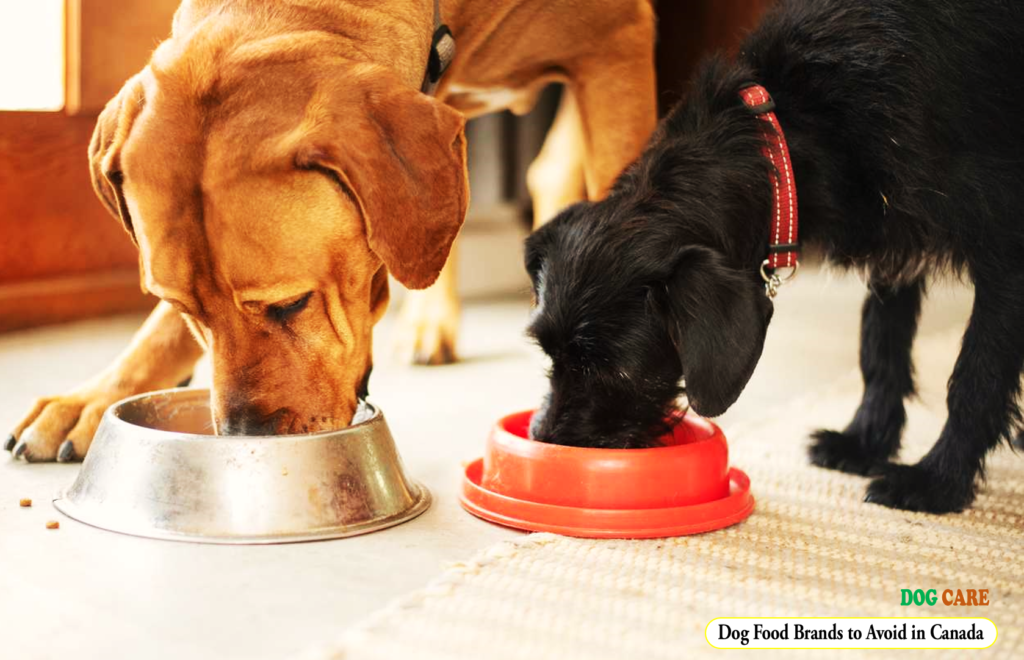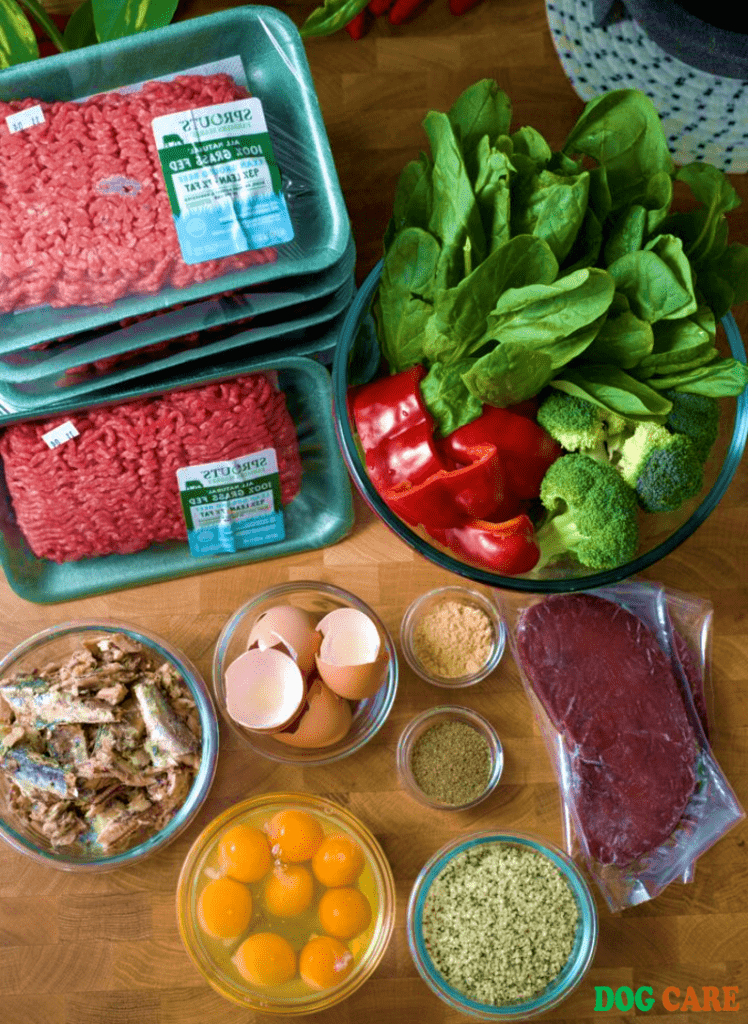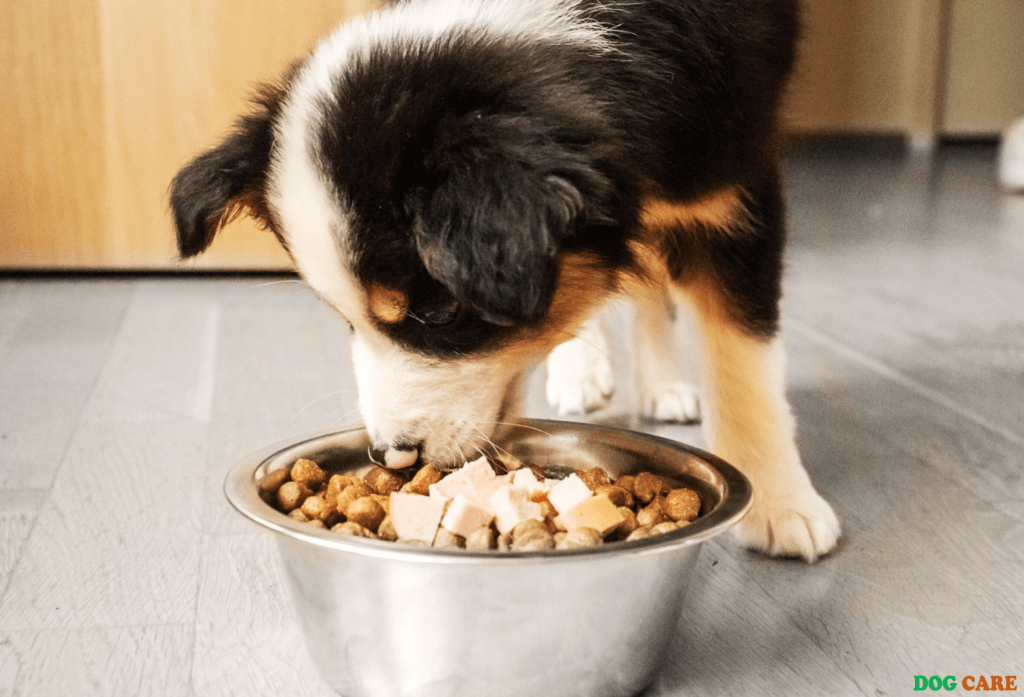Dog Food Brands to Avoid in Canada : It’s crucial for pet owners to be vigilant about the dog food brands they choose in Canada. Some brands have faced recalls and criticism due to health concerns.
Ensuring your dog’s health and well-being involves more than regular vet visits and exercise; it extends into the realm of nutrition. The food you choose for your furry friend impacts their overall health significantly. Dog owners must stay informed and cautious about which brands to trust and which to avoid.
Potential issues with dog food can range from the inclusion of low-quality ingredients to the presence of toxins or harmful additives. With a plethora of brands on the market, it can be overwhelming to select the right one. The key is to look for high-quality ingredients, comprehensive nutritional content, and positive reviews from other pet owners and professionals alike. Remember that your vigilance can lead to a happier, healthier life for your canine companion.

Introduction To Dog Food Quality And Safety In Canada
When it comes to the health and well-being of our canine companions, understanding the quality and safety of dog food is crucial. In Canada, pet owners have a wide range of brands and products to choose from, but not all dog foods are created equal. Misinformation and attractive marketing can easily obscure the truth about certain products. This segment aims to shed light on the dog food industry in Canada, helping pet parents make informed decisions for their four-legged family members.
Dog Food Brands to Avoid in Canada
Understanding Regulatory Standards For Pet Food In Canada
Canada maintains specific regulatory standards to ensure pet food safety and quality. The Canadian Food Inspection Agency (CFIA) oversees these regulations, working alongside the Pet Food Association of Canada (PFAC) to uphold compliance. It’s essential to recognize brands that meet and exceed these regulations, ensuring your pet’s food is nutritious and produced with care.
- Legislation: Federal acts such as the Health of Animals Act and the Feeds Act.
- Labeling Requirements: Strict guidelines for what must be included on pet food packaging.
- Ingredient Quality: Standards for the types of ingredients permitted in pet food.
- Production Oversight: Processes for monitoring and evaluating manufacturing practices.
The Importance Of Choosing The Right Dog Food For Your Pet’s Health
Selecting the right dog food brand is not merely a matter of taste or preference; it is a decision that has a significant impact on your pet’s health. A balanced diet contributes to everything from a shiny coat and healthy skin to dental hygiene and joint health. Poor quality dog food can lead to a plethora of issues, including allergies, obesity, or nutritional deficiencies.
- Read Labels: Pay close attention to ingredient lists and nutritional facts.
- Know Your Dog: Understand your pet’s specific dietary needs based on breed, age, and activity level.
- Consult Professionals: Seek advice from veterinarians when in doubt about a brand or product.
- Avoid Red Flags: Steer clear of products with generic meat sources, artificial additives, or harmful fillers.
Identifying Dog Food Brands To Avoid
For conscientious pet owners, the well-being of our canine companions starts with proper nutrition, which is why it’s crucial to be selective about the dog food brands we trust. Not all dog food is created equal, and some brands may be more harmful than beneficial to your pet’s health. Understanding the telltale signs of substandard dog food is the first step towards ensuring your furry friend receives nothing but the best.
Red Flags In Ingredients And Nutritional Content
Understanding the composition of your dog’s food is essential. Be vigilant for these warning signs:
- Generic meats and by-products: High-quality dog foods specify the type of meat they use. Labels listing ‘meat meal’ or ‘animal by-product’ signal low-grade ingredients.
- Fillers: Ingredients like corn, wheat, and soy contribute to calorie content without much nutritional value.
- Vague labeling: Words like ‘flavor’ or ‘color’ without specifying the source can be a red flag.
Always aim for products with a clear, straightforward list of wholesome ingredients that contribute to a balanced diet for your pet.
Controversial Preservatives And Additives To Watch Out For
While preservatives are necessary to prolong the shelf life of dog food, some compounds can have negative health implications. Pay attention to labels and avoid these substances:
| Preservative/Additive | Potential Concerns |
|---|---|
| Butylated Hydroxyanisole (BHA) | Potential carcinogen |
| Butylated Hydroxytoluene (BHT) | Similar to BHA, linked to cancer risk |
| Ethoxyquin | Preservative often used in fish meals; questioned for its safety |
| Propylene Glycol | Can cause anemia in high doses |
Check for natural alternatives like vitamin E (tocopherols), vitamin C (ascorbic acid), and rosemary extract, which act as safer preservatives.
Brands Recalled Historically And Why
A history of recalls can be a strong indicator of a brand’s reliability. Common reasons for recalls include:
- Contamination: Bacterial contamination such as salmonella or listeria, or foreign materials found in the food.
- Incorrect labeling: Mismarked packaging that might misrepresent the ingredient list or nutritional content.
- Misformulation: Incorrect levels of vitamins and minerals that could lead to health problems.
Remain informed on industry news and alerts from the Canadian Food Inspection Agency (CFIA), which oversees pet food recalls and can provide a list of brands with problematic histories.
Analyzing Consumer Reports And Veterinary Advice
When it comes to the health and well-being of our furry companions, we want to provide them with the best possible nutrition. However, with so many dog food brands available in Canada, it’s crucial to identify which ones might not meet the expected standards for quality and safety. This requires sifting through consumer reports and veterinary advice to discern which dog food brands might not be the wisest choice for your pet.
What Consumer Reviews And Complaints Tell Us About Brands
Consumer feedback is invaluable for understanding the real-world experiences of dogs with various food brands. Complaints can unearth recurring issues with certain products, such as digestive problems or allergic reactions. Reviewing platforms such as Pet Food Advisor and Better Business Bureau often showcase ratings and detailed accounts from pet owners, providing insights into potential concerns. Here’s what they have highlighted:
- Quality of Ingredients – Reports of low-quality or undesirable ingredients causing health problems.
- Recall History – Frequent recalls might indicate consistency issues with product safety.
- Customer Service – Poor responses to complaints could suggest a lack of accountability.
Professional Insights: Veterinary Recommendations And Warnings
Veterinary professionals offer an authoritative perspective on canine nutrition and safety. Their recommendations and warnings stem from both clinical experience and scientific research. Key factors they warn against include:
| Issue | Details |
|---|---|
| Fillers and Additives | Use of unnecessary fillers can lead to obesity and other health issues. |
| By-products | High amounts might suggest compromised quality of the protein sources. |
| Artificial Preservatives | Potentially harmful over time; natural alternatives are preferred. |
Case Studies: Health Issues Linked To Specific Dog Food Brands
Concrete examples provide compelling evidence of certain dog food brands’ impact on pet health. Research and case studies have revealed:
- Brand Ol’ Roy – One of the cheapest dog food brands on the market that comes at a cost is Ol’ Roy.
- Brand Gravy Train – Documented cases of liver disease from high levels of toxic preservatives found in this brand’s formula.
- Brand Dog Chow – Known for causing digestive distress attributed to its use of artificial additives and fillers.
Individual case studies back up such claims, demonstrating how these brands have directly contributed to health declines in pets. By highlighting this information, it becomes easier for dog owners to make informed decisions about their pet’s nutrition.
Alternatives To Potentially Harmful Dog Foods
Welcome to the enlightening journey where the health and happiness of your furry companions take center stage. Pet parents are becoming increasingly vigilant about their dog’s nutrition, and with good reason. Mounting concerns regarding certain dog food brands highlight the need for safer, healthier alternatives. This guide zeroes in on redirecting concern into actionable choices for your beloved pet’s diet.
Criteria For Selecting A High-quality Dog Food
Finding a top-tier dog food starts with understanding key nutritional elements:
- Meat Proteins: Look for whole meat, meat meals, or by-products from identifiable meat sources as primary ingredients.
- Fats and Oils: Essential for energy and skin/coat health. Preferably from named animal sources or high-quality vegetable oils.
- Carbohydrates: Integral for energy; sources like whole grains, vegetables, and fruits are beneficial.
- No Artificial Additives: Foods should be free from artificial colors, flavors, or preservatives that could be harmful to your dog.
- Complete and Balanced: Ensure the food meets the AAFCO guidelines for a balanced diet.
Recommended Brands With A Positive Track Record
Several well-regarded brands have consistently ensured the welfare of dogs with their nutritious formulations:
- Orijen: Known for high protein content and quality ingredients, Orijen prides itself on its “Biologically Appropriate” philosophy.
- Acana: Another champion of the “Biologically Appropriate” approach, offering a variety of recipes to suit all life stages.
- Go! Solutions: Providing recipes with solutions for specific dietary needs, this brand produces nutrient-rich, solution-focused foods.
Homemade Dog Food: Is It A Viable Alternative?
Creating a home-cooked meal for your dog can be a loving way to cater to their dietary needs:
| Pros | Cons |
|---|---|
| Customizable to specific health needs | Time-consuming to prepare |
| Greater control over ingredients and safety | Requires nutritional knowledge to balance the diet |
| Potential nutrient imbalances without consultation | |
| Possibility to use fresh, whole ingredients | Can be costlier depending on ingredient selection |
While homemade diets offer numerous benefits, it’s crucial to consult with a vet or a canine nutritionist to ensure your dog’s meal plan is nutritionally complete.
Conclusion: Prioritizing Your Dog’s Nutritional Needs
Ensuring your dog’s health and longevity revolves significantly around the nutritional choices you make for them. As pet owners, understanding which dog food brands to sidestep becomes a crucial aspect of caregiving. Brands that fail to meet the nutritional standards set by Canadian regulations or that have a history of recalls due to contaminants should be flagged on your checklist. Your dog deserves a diet that is not only safe but also enriched with all the necessary nutrients for a balanced lifestyle.
Key Takeaways From The Discussion On Dog Food Brands
- Quality Ingredients: Favor items with whole, recognizable ingredients over those with ambiguous components or by-products.
- Safety Records: Heed brands with frequent recalls or those cited for contamination.
- Nutritional Adequacy: Look for the AAFCO statement that ensures the diet is complete and balanced for your dog’s specific life stage.
- Specialized Diets: Tailor the food choice to your dog’s unique health needs, lifecycle, and activity level.
- Consumer Reviews: Assess the experiences of other pet owners with various brands.
Steps To Ensure You’re Making The Best Choice For Your Pet
- Analyze Nutritional Labels: Scrutinize ingredient lists and nutritional information. Prioritize foods with high-quality proteins, healthy fats, and minimal fillers.
- Consult with a Veterinarian: Understand your dog’s dietary needs with the help of a professional, and get recommendations on the best foods for your pet’s health.
- Research Brands Thoroughly: Evaluate brands based on their transparency, manufacturing practices, and ingredient sourcing.
- Monitor Your Dog’s Health: Watch for physical signs of improved wellbeing or potential adverse reactions after switching foods.
- Change Foods Gradually: Introduce new foods slowly, mixing them with current foods to avoid digestive upset.
True devotion to your dog’s dietary health entails a proactive approach in assessing, selecting, and continuously monitoring their food intake. Consistent attention to their reaction to different brands and formulas will help you refine your choices. This attentive approach ensures your furry companion’s diet not only nourishes them but also supports their zest for life.
Frequently Asked Questions On Dog Food Brands To Avoid Canada
What Are Unsafe Dog Food Brands In Canada?
Unsafe dog food brands may contain harmful ingredients or lack nutritional value. It’s essential to consult with a vet and research thoroughly. Look for recalls and low-quality food brands to avoid potential health risks for your pet.
Why Are Some Dog Food Brands Recalled?
Dog food brands are often recalled due to contamination, incorrect labeling, or hazardous ingredients. Recalls protect pets from potential health issues. Stay updated on the Canadian Food Inspection Agency’s alerts for the latest recall information.
Which Ingredients Should I Avoid In Dog Food?
Avoid artificial preservatives, colors, and flavors in dog food. Also, steer clear of meat by-products, excessive fillers like corn or wheat, and unnamed animal fats. Quality dog food lists real meat, vegetables, and wholesome grains as top ingredients.
How Often Do Dog Food Ratings Change?
Dog food ratings can change frequently due to formula updates, brand acquisitions, and consumer feedback. Check independent reviews and regulatory body updates periodically to ensure your pet’s food maintains high quality and safety standards.
Conclusion
Selecting the right dog food is crucial for your pet’s health. This guide aimed to highlight brands that may not meet the mark. Remember, ingredients and recall histories are key factors. For the well-being of your furry friend, doing your own research can make all the difference.
Choose wisely, and your dog will thank you with tail wags and healthy years ahead.
Dog Food Brands to Avoid in Canada


